What does the future workplace have in store?
The last two years have upended the world of work as we knew it. From working at home en masse, to staff shortages and supply chain disruptions, to the toil living through a global pandemic has taken on our collective mental health, it seems impossible to predict what might come next.
2022 gives us a chance to reset and re-evaluate our priorities, and determine what is important to us, in our lives and in the workplace. Let’s explore six workplace trends that you can expect to encounter in 2022.
Increased Need for Flexible Workspaces
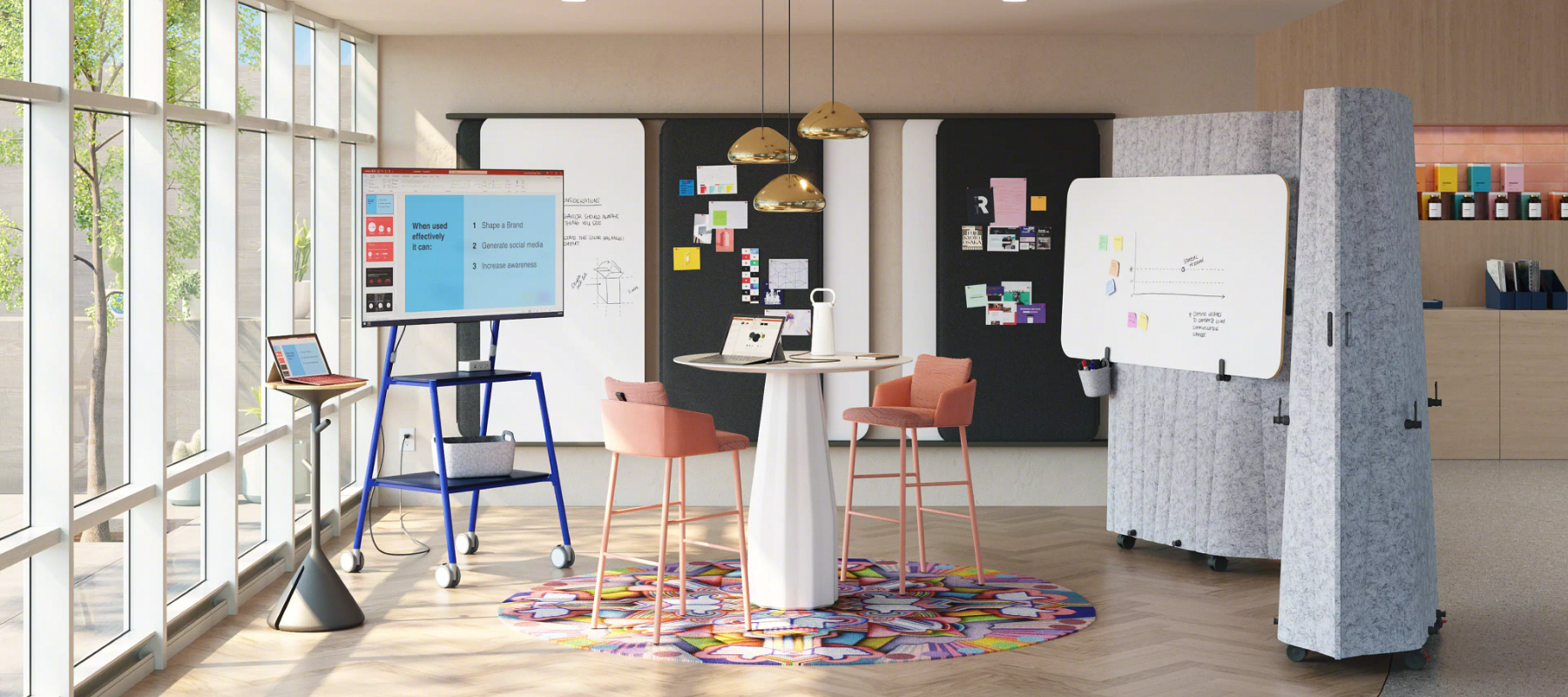
With the Hybrid Workplace model here to stay, expect an increased emphasis on flexibility and mobility. This doesn’t just mean flexible work schedules, but an inherent flexibility built into the design of the workspace. Less predictable daily work behaviors will require space and tools to be more adaptive and flexible to respond to what people need in the moment. Employees will need to adapt their space to changing needs: whether it’s a quick video call with a client, or a collaboration session with co-workers, the office will need to accommodate it all.
Some of our favourite flexible office solutions come from the Steelcase Flex Collection, designed specifically for high-performance collaboration. A series of mobile tables and height adjustable desks ensures that employees can easily shift and move with each task. Technology like Flex Mobile Power allows employees to power their devices from anywhere in the office they might choose to work. And acoustic boundary screens and other space division options gives teams the power to easily create spaces on demand, no matter what their need.
Culture building in the Hybrid Workplace
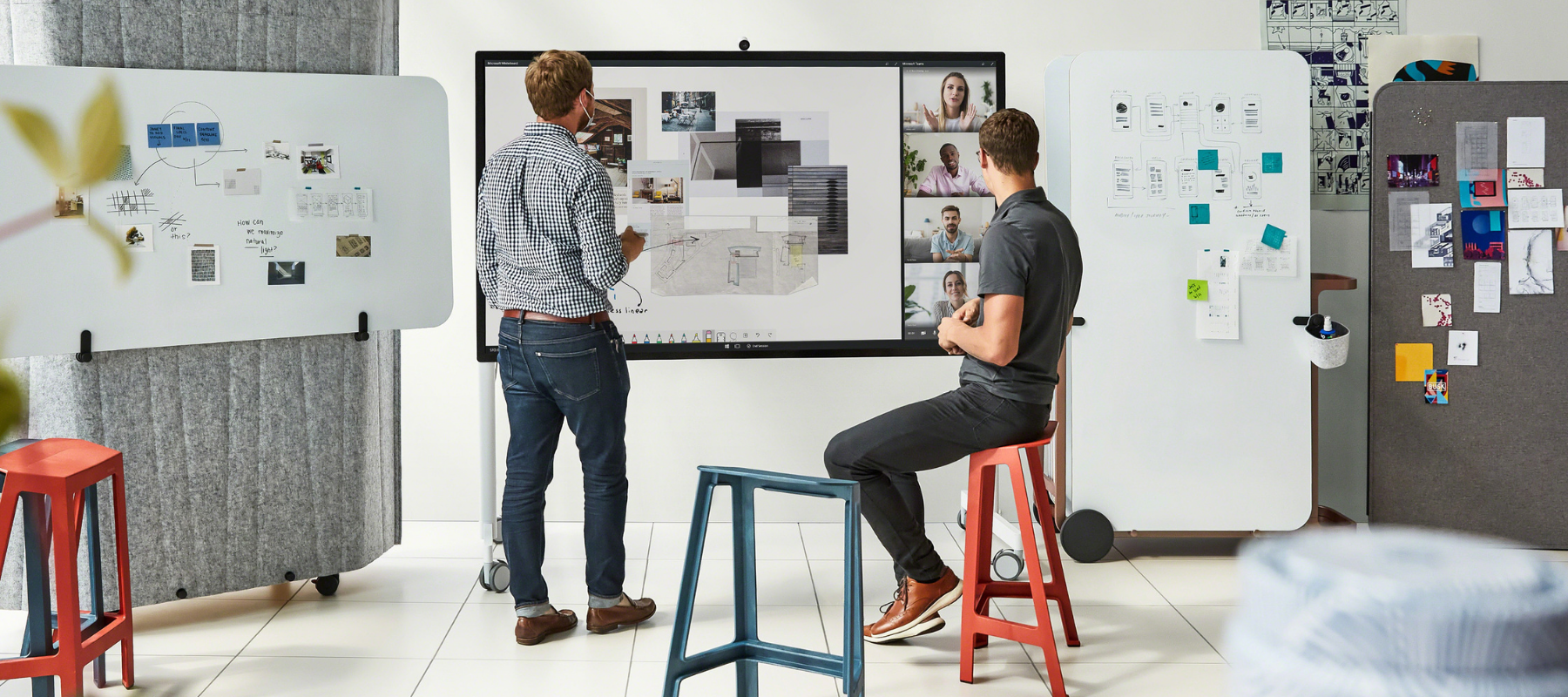
One of the most difficult challenges leaders faced during the pandemic is maintaining positive and productive company cultures when everyone is remote. Regardless of how your company defines its hybrid policies, the blend of on and offline interactions means we must think about the needs of people as they adopt a new way of working, and how the workplace needs to change to help them be successful.
The workplace can become an infrastructure for fostering a resilient hybrid culture by providing spaces which not only support increasing collaboration between in-person and remote workers, but also help people feel a sense of belonging and connection to their teams and the organization, regardless of location. Steelcase research shows that feeling part of a strong community helps people achieve more and boosts productivity, engagement, innovation, and retention. Thinking about a hybrid workplace as a community designed to support the needs of the people as they embrace new ways of working and interacting can be a dramatic and positive change that emerges from the pandemic.
The Office as a Recruitment Tool
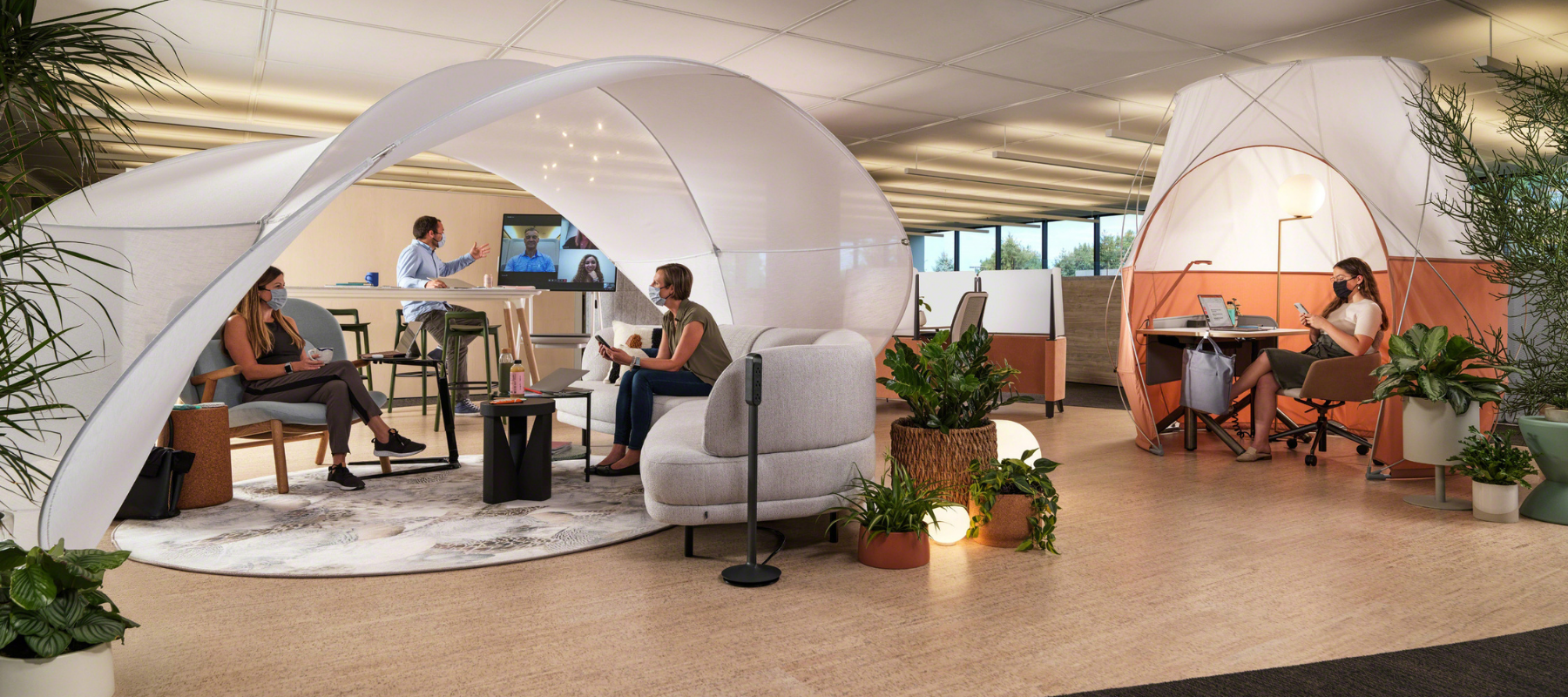
Worried about “The Great Resignation”, facilities managers and human resources professionals will look to their physical space as a recruitment tool to attract new talent and retain existing employees. Knowing that employees will be reluctant to give up the comforts of home, expect a greater emphasis on residential-inspired spaces and functional owned spaces.
Brands like Viccarbe and West Elm offer a residential aesthetic with commercial quality and durability, perfect for social and collaborative spaces that feel welcoming and put people at ease. The office can be a place that creates a community where people can feel a renewed sense of belonging, resilience and purpose, reflective of the culture of your organization.
Providing current and potential employees with a comfortable, ergonomic work station is also key to attract and retain. And ergonomics is more important than ever to consider in the Hybrid workplace. Offering a high-performance task chair, height adjustable desk and dual monitor screens can offer employees one more reason to head to the office, especially after months and months worked hunched over a laptop at a kitchen table.
Hybrid Collaboration and the Importance of Technology

The Hybrid workplace is here to stay, and so is Hybrid collaboration. Every space must now be able to accommodate both employees working in the physical space and those working remotely. To create the best possible hybrid work experience, organizations will want to offer a range of spaces and technology solutions to easily support diverse types of collaboration — from a planned creative session to an impromptu one-on-one and everything in between.
Architectural solutions like Steelcase V.I.A. can both define meeting spaces but also elegantly integrates technology, creating a link between physical and virtual participants. V.I.A. can also provide true acoustical privacy for collaborative teams, as well as for workers in adjacent workspaces.
More Individual/Focus Spaces
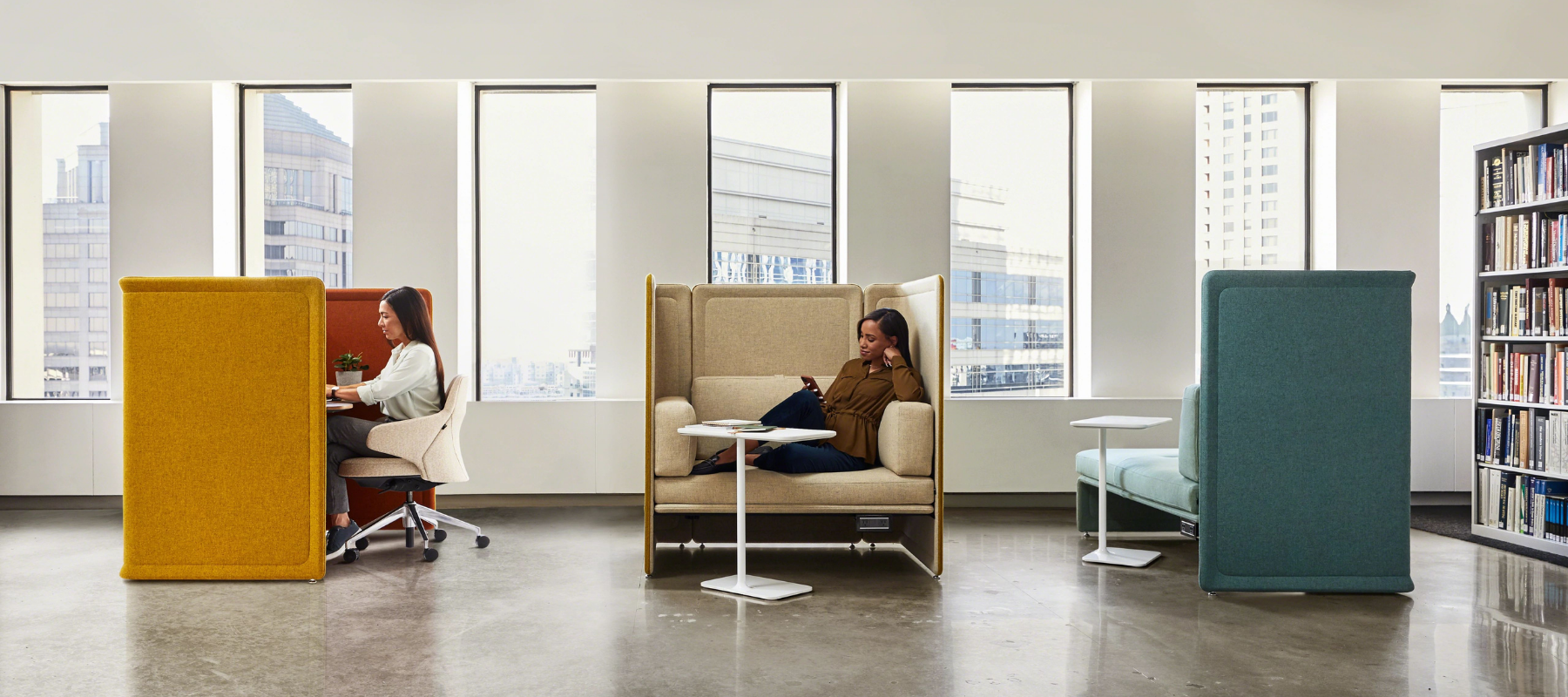
Employees will also require more individual spaces, not only to take virtual calls, but also to get focused work done. Office pods like the Loop Phone Booth can provide individuals with spaces to take quick calls without disturbing those around them, or worrying about privacy.
Solutions such as the Brody WorkLounge or the Lagunitas Focus Nook provide employees with visual privacy in order to perform heads-down focus work, without sacrificing the comfort of your ergonomic desk chair. Providing high performance comfort and support, the Brody WorkLounge features patented LiveLumbar™ technology—bringing thoughtful ergonomic design to the lounge posture. The adjustable worksurface holds technology at eye level, reducing neck and shoulder strain. Lagunitas Focus Nook offers users a touch-down destination for doing focused tasks in a traditional work posture — optimizing space within the open plan, while staying centered and free from distraction (you can even bring your own preferred chair!)
Increased Focus on Wellbeing
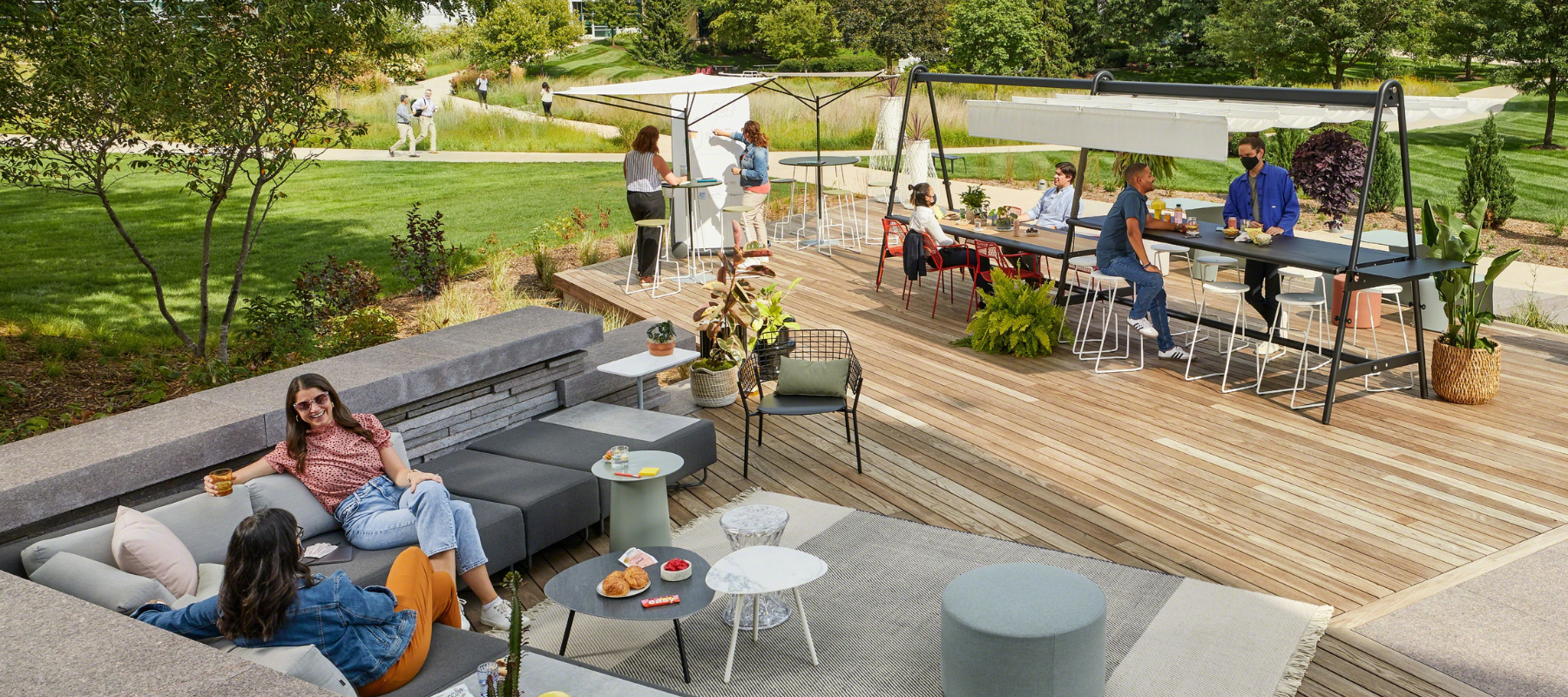
It’s no surprise that living through a global pandemic has caused us significant mental and emotional stress. Workplace professionals will need to consider how the office can play a role in reducing that stress and contributing positively to employee wellbeing.
Concepts like biophilic design were rising in popularity even before the pandemic. Biophilic design seeks to incorporate nature and natural elements indoors, as a way to reconnect us with the natural world. As designers embrace biophilia, they make spaces that better reduce stress while improving cognitive function and creativity. Living walls have also been popular in office design, as a way to incorporate nature in a completely new way. And outdoor spaces will likely continue to increase in popularity as improved ventilation becomes a key strategy for mitigating COVID-19 transmission, offering a way for people to have the human interactions they crave to be productive.
Products like Steelcase Regard and Turnstone Bivi integrate plants right into their design. Using materials like wood or even wood-inspired laminate offer warmth and enhance feelings of comfort. And a more subtle way to incorporate biophilic design is in the fabrics you choose for your space. Consider materials that offer a series of organic patterns, calming colors and natural textiles that reflect nature’s soothing properties.
If the past two years have taught us anything about what’s ahead, it’s that it’s almost impossible to predict what’s next! Our team of workplace experts can ensure you’re ready for whatever the future of work has in store. Contact us today!
